The Sienna Foundation
Angel Theory pt.1
M-Systems V4.05
By Nick Ray Ball 16th April 2016
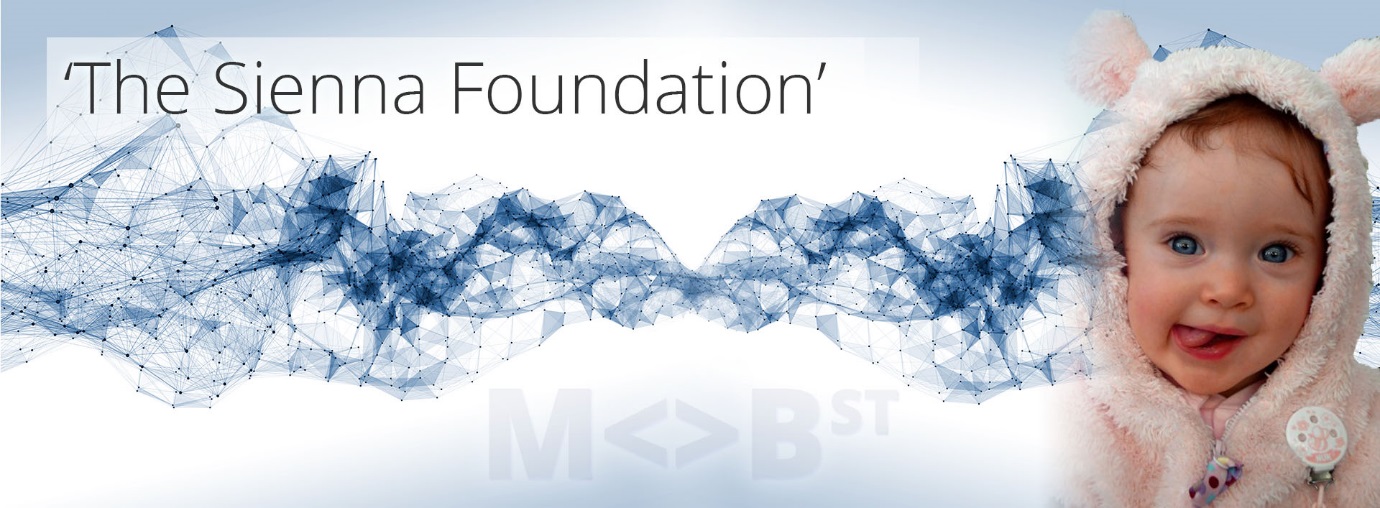
Angel Theory – ‘The Sienna Foundation’
A quality of gravity in string theory is its ability to transcend universes, the suggestion that one may communicate in this way gave ‘Angel Theory’ its name.
M-Systems 1, 2, 3, 4, 5, 15, 16
Influenced by Professors Leonard Susskind / Brian Green / Amanda Peet
Angel Theory – Inspired by Sienna Skye
A Digital Theory of Everything
Why Angel Theory?
Because in Super String Theory and M Theory there are many universes, and it is possible to communicate from universe to universe using high graviton bursts. If there were a race in another universe trying to communicate with us, it’s likely that they would be more advanced and could answer just about any question one could ask.
As such, to many on our earth at this time, they would be gods. And the individuals within that were sending us signals could be considered Angels.
We need to express from the start that Angel Theory is this is not String Theory. It is a combination of many areas of physics. We are not confined to using exact rules from this theory or that theory. We are building a digital economic system that is superior to current economics due to lessons learned from briefly studding theoretical physics.
We consider The Theory of Everything as how to unify gravity and the digital age (General Relativity vs. Quantum Mechanics). We found that principles of String Theory helped to explain how one would start looking for the answer. In particular the elasticity of string theory allowed for any quantum result fall within the math of General Relativity.
And so we made the Network of businesses capable of accepting any financial result. And in the process making the risk for any company that joins the network zero.
Taking a quote from Leonard Susskind
‘We boost the hell out of the system along the Z axis (Z can = Profit). Until every single particle (business) has a huge momentum
If there is any particle (business) that is going backwards, you just have not boosted it enough. Just boost it more until its going forward with a large momentum.’
And so we create a system that has reserves, and the ability to boost the bananas out of it. We have books of work and prototypes on how we would boost a system, and the system makes sure no individual business ever fails. We already have 151 reasons why our small network in Africa will improve. Within a year, we expect to have 250, and the resources to boost all network companies.
This is not the first time we have considered this principle. This is the micro network version, a version that we can use and are using with a collection of business that we are creating as a sting right now.
However, if we go back 4 years to the third American Butterfly Book we created in chapter 5 @Angel POP,’POP will be explained later. For now, we shall just say that it is a new branch of math we use called ‘Compatible Finite Math.’ Which does not completely remove rounding errors from computations but it goes a long way towards making a far more predictable system.
Angel POP was the growth of the network at an extreme macro level, greater than current GDP. Within this macro framework, due to POP the eventual state of any Marco Network (Resort Development) would be a success. And so, with networks planned all over the world as the final outcome was predetermined as a success, one could start a network in a poorer economy such as Malawi. And business would come as the eventual outcome would be a success. So, spreading the butterfly effect of prosperity across the globe, solving many philanthropic changes the word faces today. Hence the name Angel POP.
Angel Theory is an evolution of Angel POP and all the principles that we will discuss in this paper and all future discoveries that get added to the network design.
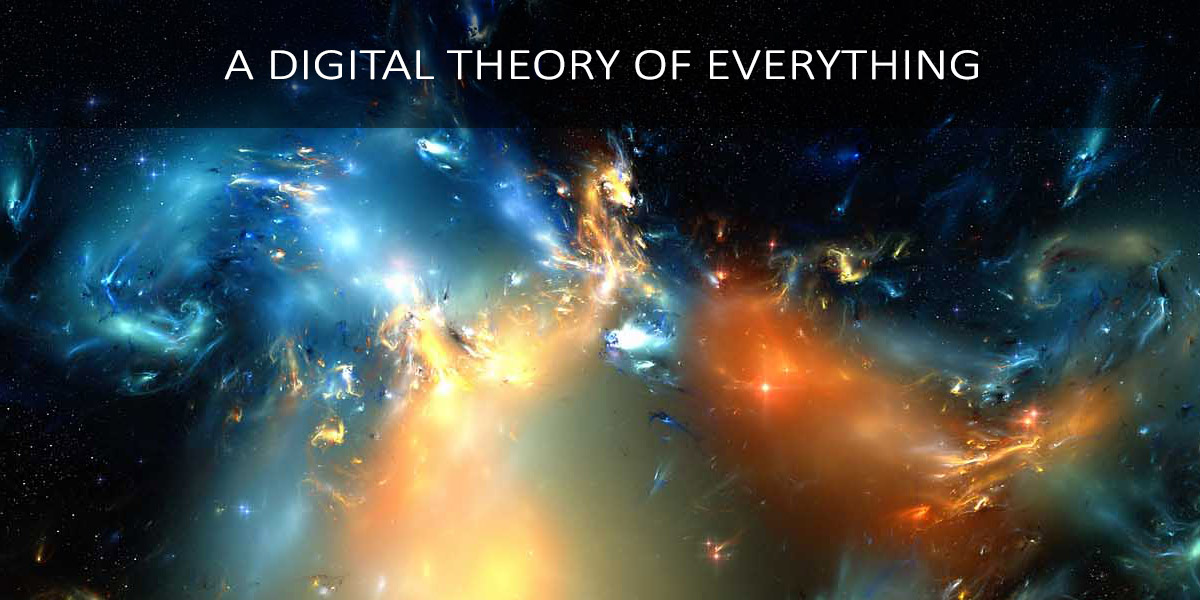
A digital Theory of Everything is the product of a 5-year project using principles from established and theoretical physics to create a more efficient and predictable global economy, which addresses many of the world’s philanthropic challenges and threats.
If one does not have an understanding of theoretical physics, we recommend watching the following documentaries by Professor Brian Green. In particular, for what is contained within this article we advise watching Quantum Leap and String and Super String Theory
- What is Space
- The Illusion of Time
- Quantum Leap
- Universe or Multiverse
- String and Super String Theory
In addition, or if only one has time for a quick introduction. We suggest the beginning few minutes of ‘A Theory of Everything’ by Garrett Lisi. The analogy between a coral and Quantum Mechanics presented by Garrett was the ‘Eureka’ moment that changed the direction of American Butterfly into a ‘physics first’ economic hypothesis.
Chapter Index
- Textbook Definition of The Theory of Everything.
- The Theory of Everything as an economy
- General Relativity / Gravity / Time and Space
- Quantum Mechanics / The Digital Age
- String Theory
- Supersymmetry
- Chaos Theory / Butterfly Effect / Compatible Finite Math / POP
- Villa Secrets Network
- The Theory of Every Business
- Quantum Economics
- The Network on a String
- Villa Secrets Network
Before we start a quick word to say it would be easier if American Butterfly Books 2 ‘Quantum Economics’ and 3 ‘The Network on a String’ were on line for people to reference.
For now, we have Book 1: The Theory of Every Business (2012) and the research website for the book S-World.biz (2011). And in addition we have research into the software for this the 5th Book S-World Network (2016). Which may well change its name to ‘A Digital Theory of Everything.’
1. The Textbook Definition of ‘The Theory of Everything’
If one Googles ‘The Theory of Everything’ one will find a film about Stephen Hawking. However, before this film was made, a search for ‘The Theory of Everything’ presented many pages and articles saying much the same thing. What follows is a simplified version of the Wikipedia definition.
The Theory of Everything, it is a theory that fully explains and links together all aspects of the universe.
Finding the ‘Theory of Everything’ is the Holy Grail of physics. At the beginning of the last century, two different theories came close. Einstein’s Theory of Gravity and Quantum Mechanics
The technical name for Einstein’s theory of Gravity is General Relativity, which explained the universe on a grand scale: planets, stars, galaxies.
Whereas Quantum Mechanics as about very small things, like atoms & electrons. Quantum Mechanics has united three of the four known forces: strong, weak, and electromagnetic.
However, the fourth force, Einstein’s smooth and predictable theory of Gravity, does not unify with the jittery and unpredictable mathematics of Quantum Mechanics.
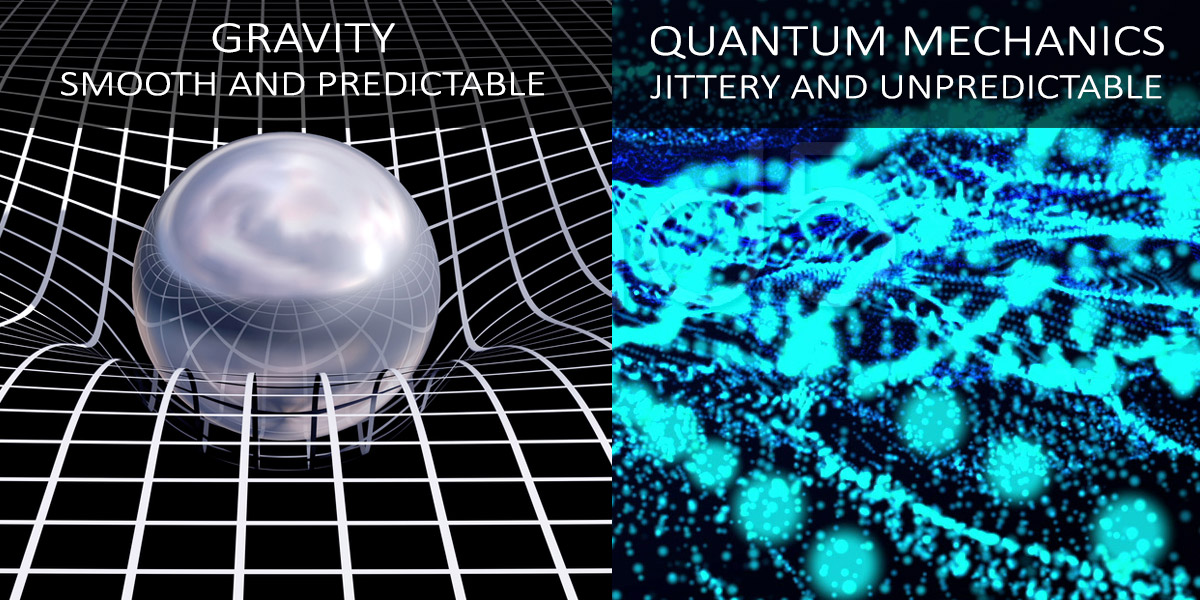
What it boils down to is this: The Theory of Everting will be solved if one can combine the 3 forces used in Quantum Mechanics with the fourth force of gravity.
Over the past few decades a set of theoretical mathematics called “String Theory” has emerged as a leading contender which will unite the forces and create a factual Theory of Every Business
End of insert
However, since the Large Hadron Collider was built in 2008, no evidence of String Theory has been found. And due to this, String Theory has lost much of its appeal over the last few years.
This is of no actual consequence to the mathematics and framework of the S-World network. The S-World framework is not an exact match to our universe. Instead it looks to cherry pick the mathematical genius of many fields within theoretic physics.
We are looking at the mathematics created by theoretical physicists and using/adapting it in business and economics, not searching to unravel the mysteries of the universe.
If String Theory is proved to be incorrect, it matters not. It is not only a Theory of Everything, it is also a highly evolved and economic set of mathematics. So, it is useful in both micro and macroeconomics if the parts in it that make it ‘far more economic’ can be emulated.
Also note that whilst the mathematics of the S-World Network does consider the principles of string theory as a key component, it also takes influence from many proven branches of physics: Quantum Mechanics, General Relativity & Thermodynamics. In addition is more influences from theoretical physics in Chaos Theory, the Butterfly Effect and Supersymmetry.
Lastly, since writing ‘Quantum Economics and ‘The Network on a String’ in 2012, we now also consider The Higgs Boson and Dark Energy.
The key thing we are looking at is how one can mimic the uncertainty of Quantum Mechanics with General Relativity within our network. This is to make it economically superior to any other network or economy.
Collectively we create a Digital Theory of Everything.
Why ‘Digital?’
This is for two reasons,
- The network was based around technology. It considers rewriting all that we have learned about economics over the last few thousand years, and starting again with a digital foundation.
- In the same way that ‘Gravity’ or ‘Time & Space’ are more familiar to most than ‘General Relativity.’ ‘Digital’ is an easier way to explain ‘Quantum Mechanics.’ Quantum Mechanics powers all that is digital. It does so by changing the orbits of electrons around atoms.
2. The Theory of Everything as an Economy
In this analogy, we consider the global economy as measured at $77 Trillion to be both gigantic and relatively predictable, and as such it has similar characteristics of Einstein’s Theory of Gravity (General Relativity).
In contrast we consider the individual people and businesses as having the properties or Quantum Mechanics. As each day many new individuals and businesses appear and disappear, in such a way that cannot be calculated or predicted.
2a General Relativity / Gravity / Time & Space
For this example, to be more accurate, we need to add Dark Energy to Gravity. As it is the Dark Energy that keeps the universe expanding.
So we have our standard Theory of Everything model, with the universe of General Relativity on one side and the tiny atoms and electrons of Quantum Mechanics on the other.
Both have been tested again and again. And with the exception of the Dark Energy making the universe expand, every experiment ever performed has proved both these theories correct.
But they don’t unify. So either one theory is incorrect or there is something else happening that we do not know.
Next we consider Gravity as Global GDP, (Gross Domestic Product) (The Global Economy) which in 2015 was in the region of USD $77 Trillion.
But first we must qualify, by associating Dark Energy with inflation and population growth. As such both the universe and the global economy are getting bigger.
Economists the world over can be relatively certain how much the world will collectively spend this year, next year, and the years that follow. If measured in ten year intervals over the last 100 years, we see a smooth line increasing over time.
2b, Quantum Mechanics
Now we need to consider the Quantum Mechanics. Which we see as the world’s individual people and businesses as having Quantum Mechanical qualities. Partially at smaller scales, individual people on average salaries or less and small business.
At the smallest of scales, an individual. There is no experiment that can be run that unifies the spending and fortune of any individual to the sum total of the global economy. There are so many factors of uncertainty…birth, death, a mother may retire from the workplace to raise her baby, a factory could close leaving thousands unemployed, one man can win the lottery and another could get sued for all he has.
In poorer countries there are more factors, from the rains not coming to finding oil or other resources.
You get the picture, there is a lot of uncertainty when trying to measure or predict the fortune of any individual. There is no way to mathematically reconcile or predict what any individual will do.
And yet, one can be relatively certain that in 2016 all individuals will collectively spend about $79 Trillion dollars.
In ‘The Theory of Every Businesses’ Chapter 8, (2012) from page 135 ‘Staff QE Scores’ we see a fledgling plan to better track the personal spending of individuals.
However, to find something that we can practically use right now to improve and plot the growth of S-World, we look at small to medium business, not individuals.
Small Business like individuals have the uncertainly factor which we associate with Quantum Mechanics. Small businesses are vulnerable to all sorts of challenges. Most recently the popularity of the internet has changed the way many businesses trade. Those that had good online presence did well. Those that did not suffered, as a host of new competitors were created where companies that were good at the internet made their own business in different niches.
Now with the internet as an integral part of most business design, the next race will be in software for the business. There is an awful lot of efficacy to be gained from software like our design called ‘The Divergent CRM’
Which is an essential part of S-World and will assist companies to improve efficacy and increase profit. So, making companies more predictable and lessen the likelihood of any company failing.
However, The Divergent CRM cannot in itself guarantee a business success. And all the time there is a risk of failure, there is uncertainty unless there is a way to guarantee a business will succeed. And if so, there is no way to accurately unify it with the smooth and predictable behaviour we see when looking at all companies as a whole Global GDP.
3. String Theory
It is very important to note that we are not actually using the mathematics of string theory. We are looking for effects that could be mimicked within the S-World Network.
In 2012 within the 3rd part of the American Butterfly hypothesis ‘The Network on a String’ we presented a graphic inspired by two documentaries.
- Dr Amanda Peet: String Theory for the Scientifically Curious
- Leonard Susskind: Lecture 1, String Theory and M Theory (17 Mins)
Here is the graphic 1
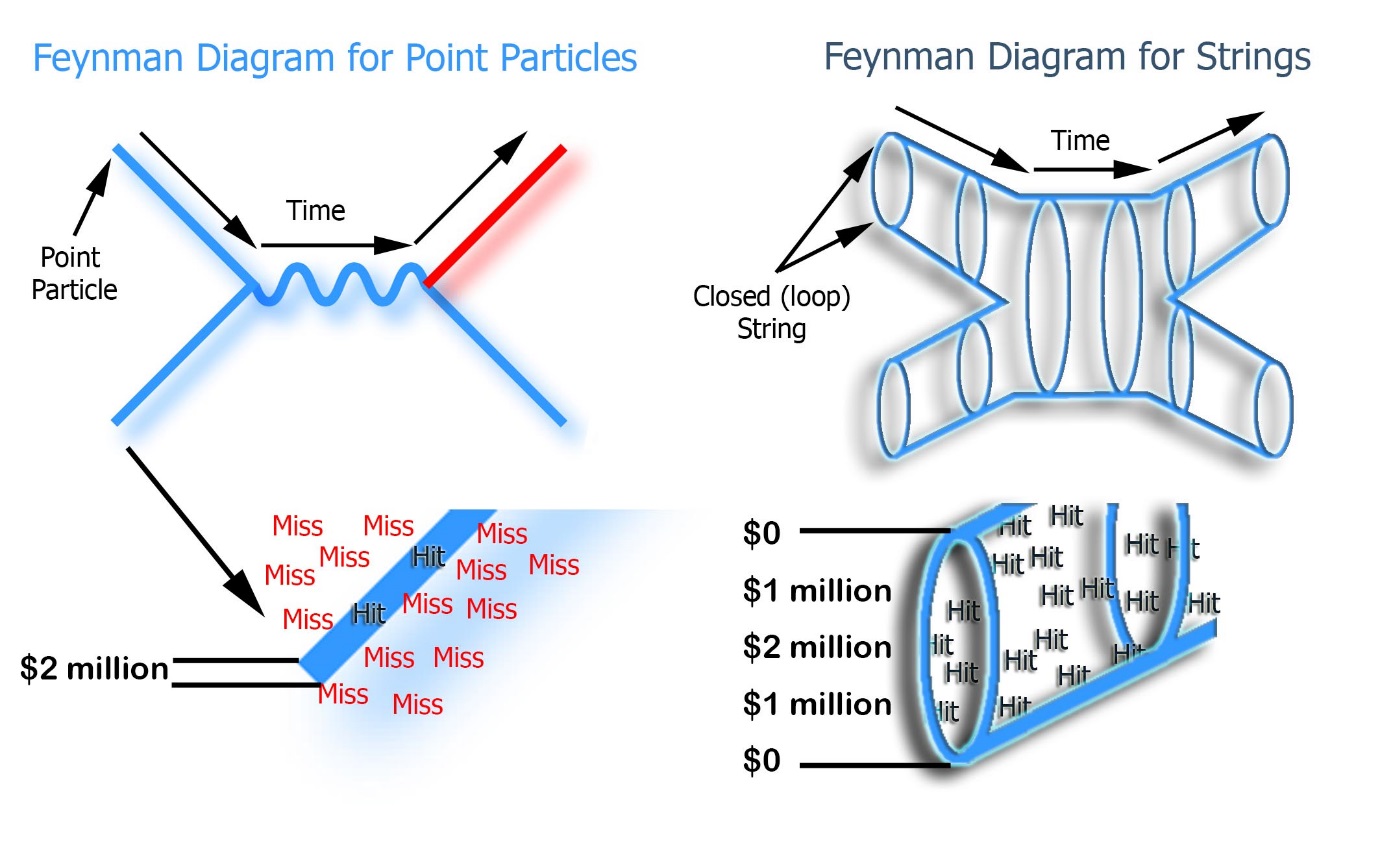
What we see is a Feynman Diagram for point particles and strings. In the Standard model (on the left), in extreme conditions such as Black Holes point particles cannot be unified. Where as in string theory, the elasticity of the mathematics allows for all outcomes to fall within an acceptable range.
And so, we look to mimic this effect within the framework of the network. So, any companies’ financial result, even a negative value was still within an acceptable range.
Within ‘The Network on a String’ at a macro (big) level we found a good way to mimic this effect by adding a new mathematical rule, this time from Supersymmetry. Which when used in tandem with String Theory creates Super String Theory.
3b Supersymmetry
The rule in Supersymmetry is very simple. It is that for every particle, (or in the case of the S-World Network any business) has an equal and opposite particle. The lightest particle twins with the heaviest, the second lightest with the second heaviest and so on. When considered as a whole all the particles and their twins are either exactly the same or very similar.
3c POP (Pressure of profit) (Compatible Finite Mathematics)
POP is the founding mathematics of the S-World framework and American Butterfly hypothesis. It was created as a consideration of how to lessen the effects of Chaos Theory and in particular rounding errors in computations, making it impossible to create a perfectly recorded financial result.
The basic principle is very simple, we create the network mathematics as cubes, which has a profit limit. Once the limit is reached, profit is invested into creating a new network in another location. Then when the new network reaches its profit limit, it and the original network contribute to a third, and on and on. Eventually creating a tidal wave of POP Investment and a cash rich network.
Below we see an adaptation of the POP Investment Principle called Baby POP, which is a more relaxed version of POP. Which once created was the point where the blog and research site S-World.biz tuned into American Butterfly.org and The Theory of Every Business. Note that the more networks are created it speeds up the creation of new networks. Networks are always made of 16 companies that when developed turn into 8 twins, the lightest and the heaviest.
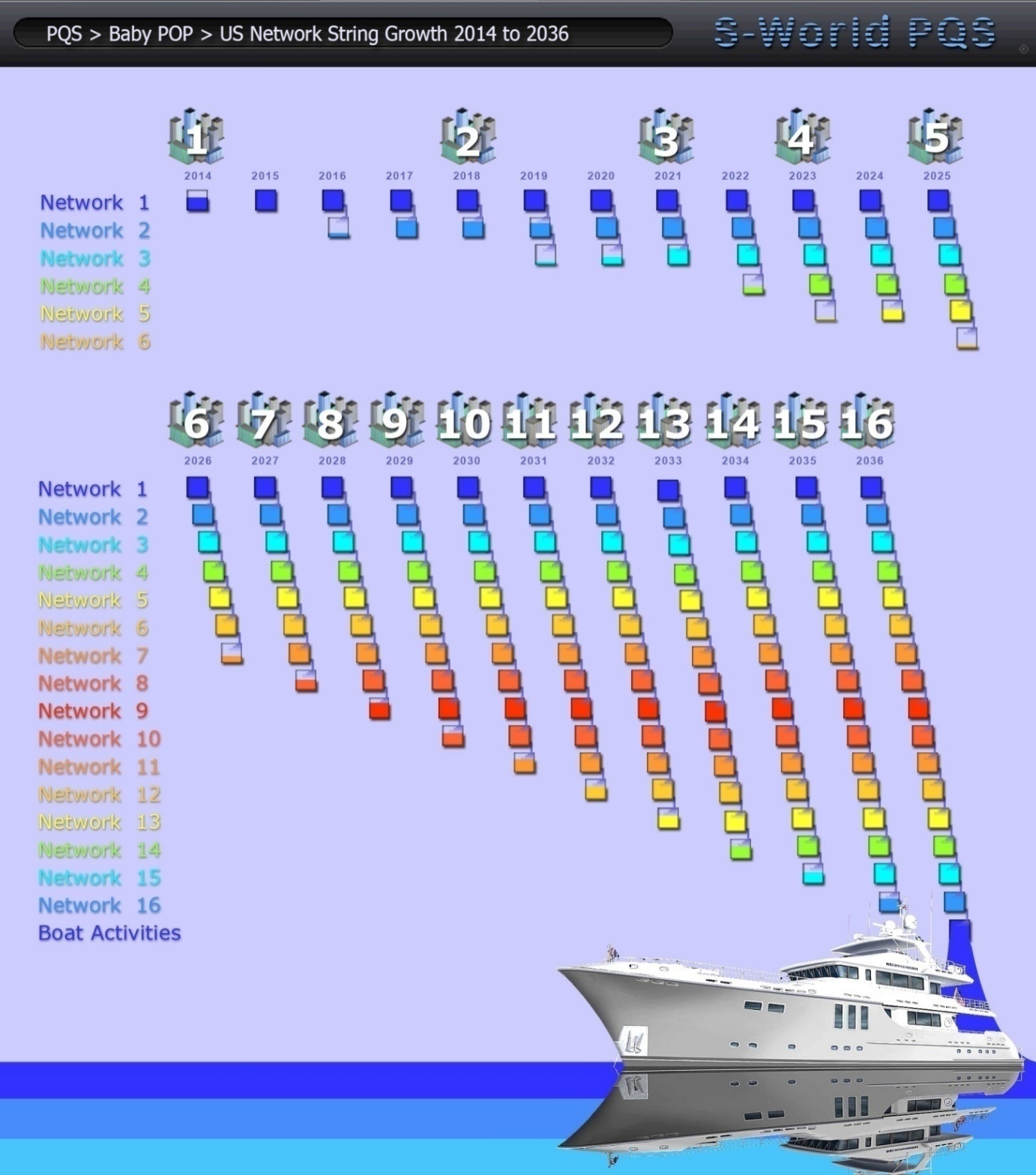
To date we do not actually have the starting point of the currency of the network, but we think it needs to be a multiple of a plank length. The reason for this is that in case there is an universal economy, it would likely be pegged to something, and the plank length seems like the appropriate constant. However, how will this work in a multiverse model where the plank length could be different?
Initially we used the simple doubling of numbers as a way to create the POP actions: 2 > 4 > 8 > 16… However, a later adaptation used cubes which are created from multiples of 8 so: 8 > 64 > 512
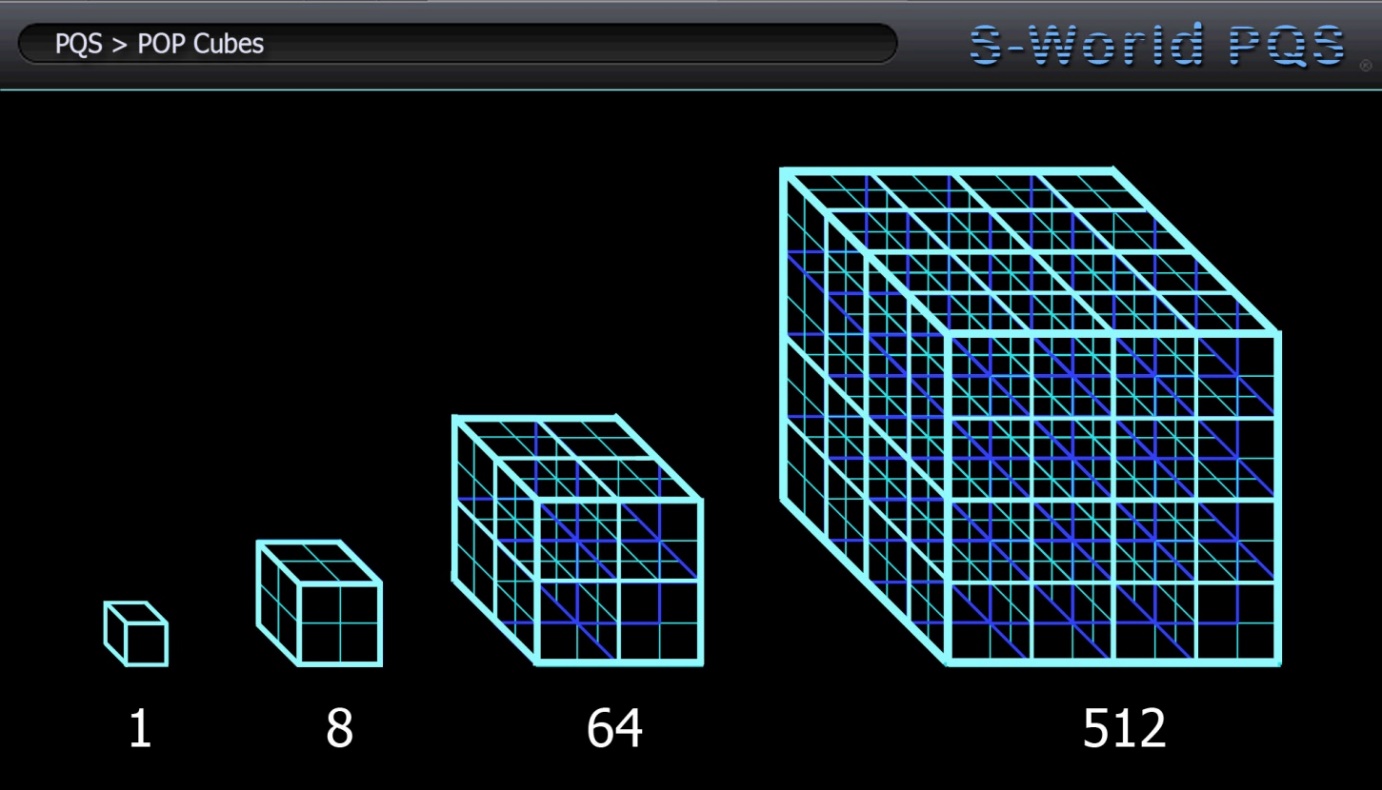
Eventually leading to a global cube off 512 > 4096 > 32768 Networks
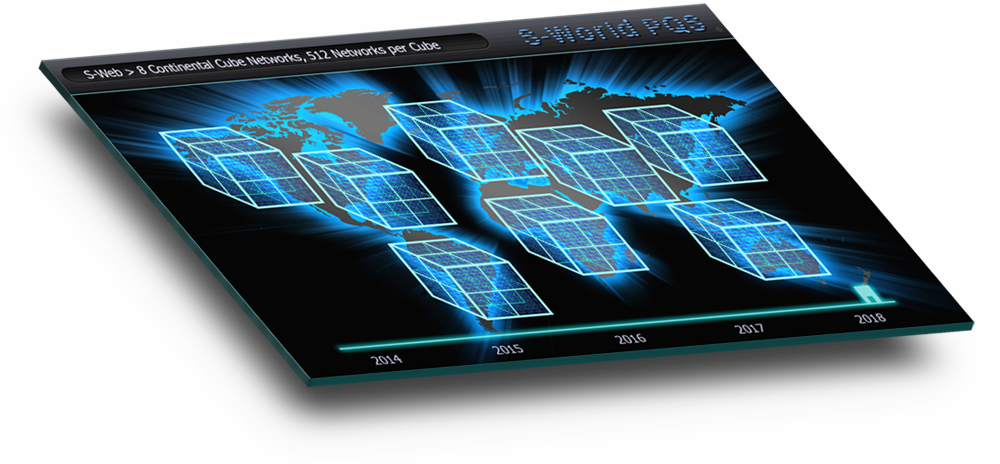
3d M⇔Bst > SUSY Hierarchal Spin Equalizer’
In late 2012 from the heaviest matches the lightest principle in supersymmetry we created the ‘M⇔Bst > SUSY Hierarchal Spin Equalizer.’ And applied it to estimates of the POP overflow of all the desired Florida Networks (see The Theory of Every Business) by 2036.
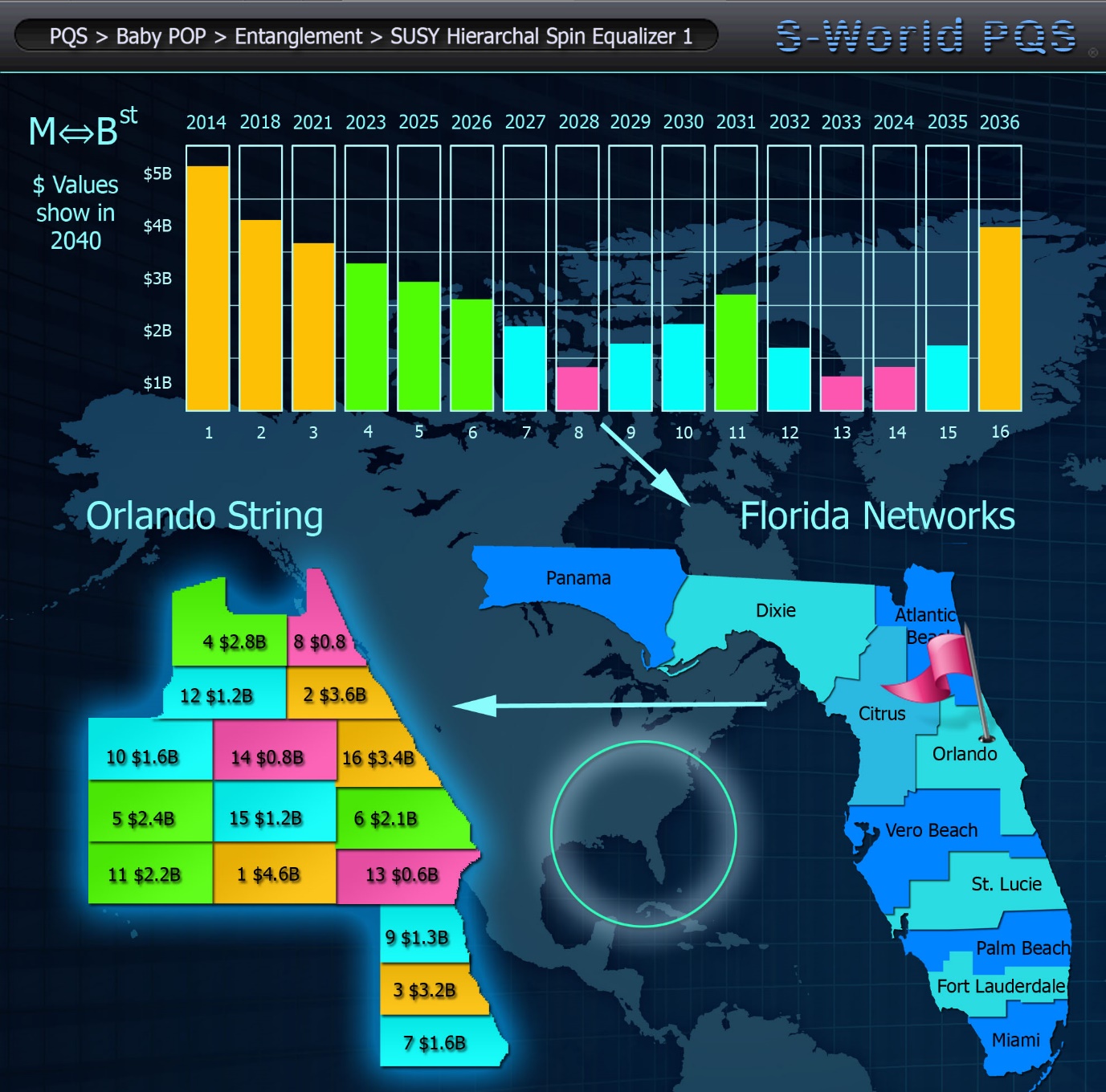
This result is difficult to predict with any degree of accuracy. From the 5th Network onwards until the final network, it’s a complete lottery. Any one network could excel, and whilst it’s unlikely any individual network could return a ZERO result.
Now let’s see what happens when we apply the Supersymmetry strongest twins with the weakest rule.
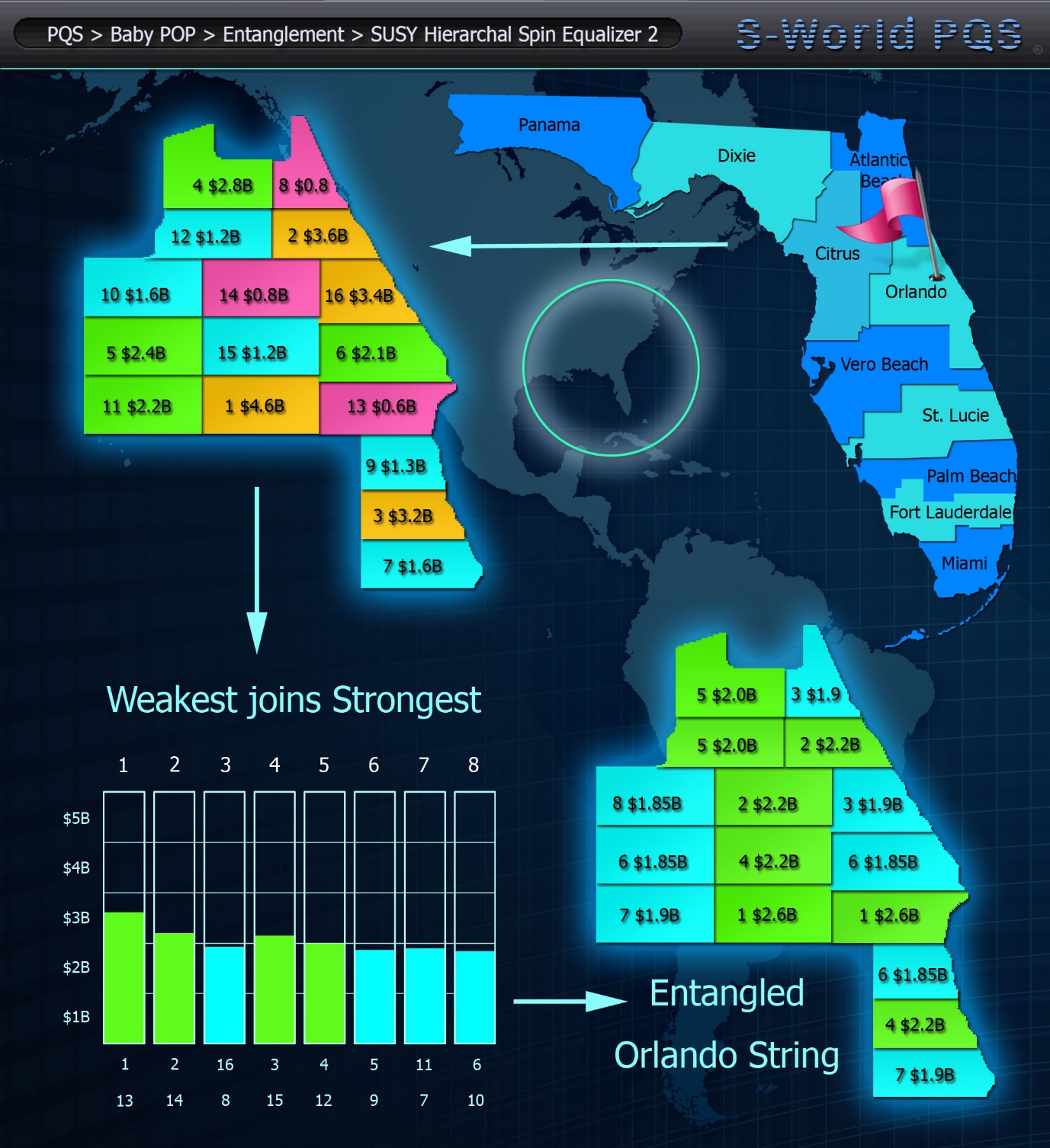
And hey presto, we create a far smoother and more predictable set of financial results. Even if a network made no contribution, it would still have created POP investment. And so be richer. Indeed, it could use the POP Investment from its heavier twin to first invest into its own sector, until it was in profit again.
It not completely the same as the string theory Feynman diagram where all possible results are acceptable. But it’s close.
A note on what may be described as ‘imposed socialism’ in a way this is, as the POP investment fund many philanthropic initiatives, as seen in ‘The Theory of Every Business’ Chapters 3: The Theory of a lot more than we know now and 8: S-World UCS (Page 151).
However, within the workings of POP the companies that contribute are rewarded to their satisfaction. And importantly, companies only contribute to POP when their S-World powered business makes about 4 times of what would be expected had the company not had assistance from S-World. We will present this point in great detail within the forthcoming ‘Network’ section of the Villa Secrets Business Blog.
To sum up in a sentence, recently the Villa Secrets prototype which was started in Early 2013 after 4th part to American Butterfly ‘The Butterfly’ was created around a SWOT analysis that said the weakest part of our plan was the lack of a porotype. So we created Cape Town Luxury Villas.com, and it was successfully launched in March 2014. It has recently been valued by South Africans’ leading brokers at $212,000.
Our position is that if our first years’ work with less programmers it now worth $212,000, our 2016 work is worth far more. In addition to this, the software in the development que, which will cost us at least $3,000,000 to create, increases the value of what Villa Secrets is offering to over $1,000,000.
Currently we are staring to make a number of strings of Networks, 16 different companies in the same or similar industry all with unique marketing plans. A typical partnership would pay between $15,000 and $50,000 to join the network and would expect to make about $50,000 in profit in year one. Increasing after due to effects made from the network working collectively and improved software and marketing.
By the third year, we would expect the company to make at least $200,000 a year in profit. At which point, the POP Investment kicks in. POP Investment only applies to companies that have reached their initial profit target then increased it 4-fold, an effect that can only be created collectively.
This structure also increases the cooperation and profitability of each network string. As when the string is created, whoever is in the string gets a big say on the other companies that will be recruited. As the future POP profit has the Supersymmetry weakest vs strongest twin the profits rule. It is in the interest of all in the string to choose companies that will create the most profit made directly or indirectly.
We will discuss the ‘indict profit’ soon as a part the M⇔Bst
For now, we need to consider NET POP, which is the way we create A Theory of Everything. So, all results including negative results fall into an acceptable margin right from the start.
4 The Higgs Boson, Net POP and the A⇔Bst
The Baby POP investment principle only applies to companies that will do very well in the years to come. Which is only useful in the future?
We needed a new version of POP that mimicked the string theory Feynman diagram from the word go. That smoothens out and unified the individual companies from the word go.
So we created NET POP.
4a. S-World Non-profit Company Structure
NET POP is best described as franchising, similar to McDonalds. But instead of a McDonalds receiving a 4% or 5% share of turnover and then paying dividends, all the income to the franchise is used for development or marketing. The franchise is Non-profit.
Currently, this is not the legal position of Villa Secrets. As for a long time, it seemed that the best way to raise capital to create the non-profit S-World network was to gain investment in Villa Secrets. However, it is not looking more and more likely that Villa Secrets will raise enough money via its own merits. As such, the company structure we see below is the most likely company set up. With more industry sectors opening as non-profit S-World Companies over time.
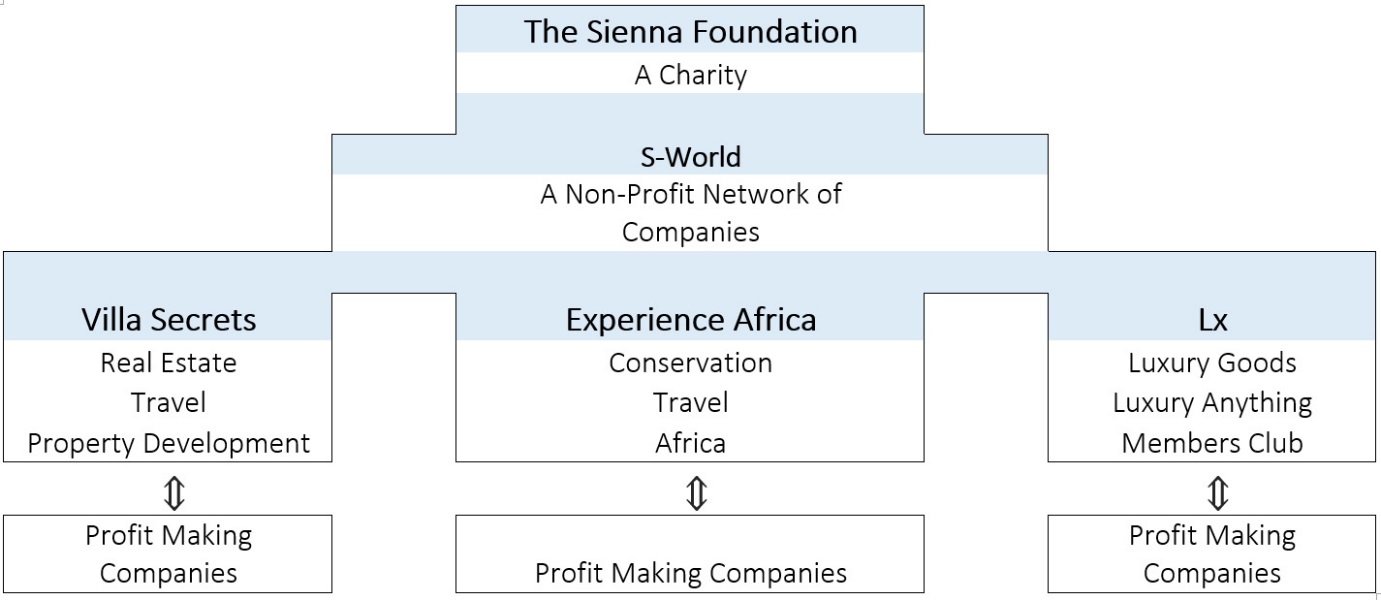
Currently, the Charity ‘The Sienna Foundation’ is being prepared for UK registration. It will eventually look at many causes. Right now it is dedicating itself to ‘saving endangered animals,’ ‘buying and preserving forests,’ and the rather self-serving but important ‘research into the use of particle physics in macro and micro economic systems.’
4b. The Higgs Boson
Recently, since we have researched the Charity and non-profit models, we have considered the Higgs Boson
The Higgs Boson is a special particle first theorised in 1964 by Peter Higgs. This particle is unlike any other. It glides through space and time giving mass to all the other particles. We know from Einstein’s famous equation E=MC2 that Energy is equal to the Mass of an object multiplied by ‘C2’ The Speed of light squared.
And so, if without Mass there is no energy, and as such, without the Higgs Boson there would be no energy. And without energy we would not exist. So it’s a very important particle, often described by physicists as ‘The God Particle.’
The Higgs Boson was originally considered within the Network due to a Google Charitable Initiative called ‘Google Grants’ that offer $10,000 a month in free ads to qualifying Nonprofits. At the time, we were working on Experience Africa. Which since the 4th part of American Butterfly ‘The Butterfly’ was destined to be a loss leader, and as such it developed into a Nonprofit company.
We can see the original idea here Experience Africa.com, which has been explained here
https://www.youtube.com/watch?v=tsWbCKOGOVQ
(show Video)
Simple enough, we create Safari specialist companies and half the net profit was donated to appropriate charities.
In this model, if one added $10,000 in free Google Ads to each of 16 non-profits,’ all would do very well. And in this model the Google Ads take on similar behaviours to the Higgs Boson, giving the equivalent of mass to each company so it can make the equivalent of energy, money.
Note however, the main charitable initiative for experience Africa is the creation of a booking system that included The Divergent CRM and considerable marketing for Safaris in general. Which would take 12.5% from each boking and give it directly to charities. Should half or more of the Safari use the system, it would create enough income to property deal with the poachers.
Having been inspired by the Higgs Boson Analogy for Google, and encouraged by development that meant we would not need investment and so could make Villa Secrets non-profit. We consider that if Villa Secrets is non-profit and its main function is to make as much money as it can for development and marketing for the business it supports, then that would be the quickest way to make the system that was needed for Experience Africa.
And in addition to the 16 businesses in the first Villa Secrets Cape Town Network string could Villa Secrets as having the properties of The Higgs Boson. But with iteration ‘⇔’
Seeing the Higgs Boson feeding back.
We consider this at the conception of a new network string. As Villa Secrets first creates and then gives energy to new companies. Then continues to improve the profitability of the companies. We see this increase in profitability as the ‘M’ (mass) mass provided by the Higgs Boson. It’s not all there is to energy or profit. But without it, there would be no significant increases. Villa Secrets exists only to make better websites, software, system and provide powerful marketing for the companies within its network. Supplying the equivalent of mass to all it recruits.
4c Chaos Theory and The Butterfly Effect.
The founding physics of the network was considerations of Chaos Theory and The Butterfly Effect. This lead to considering a butterfly within one of many cubes, and the consideration that if one could measure the energy transfer from the individual flap of butterfly’s wing within its cube and the effects it had on all the other cubes one could work out ‘Does the flap of a butterfly’s’ wing within in Brazil, cause a tornado in Texas’
Below we see a graphic from book 3, The Network on a String (2012) that illustrates an individual cube.
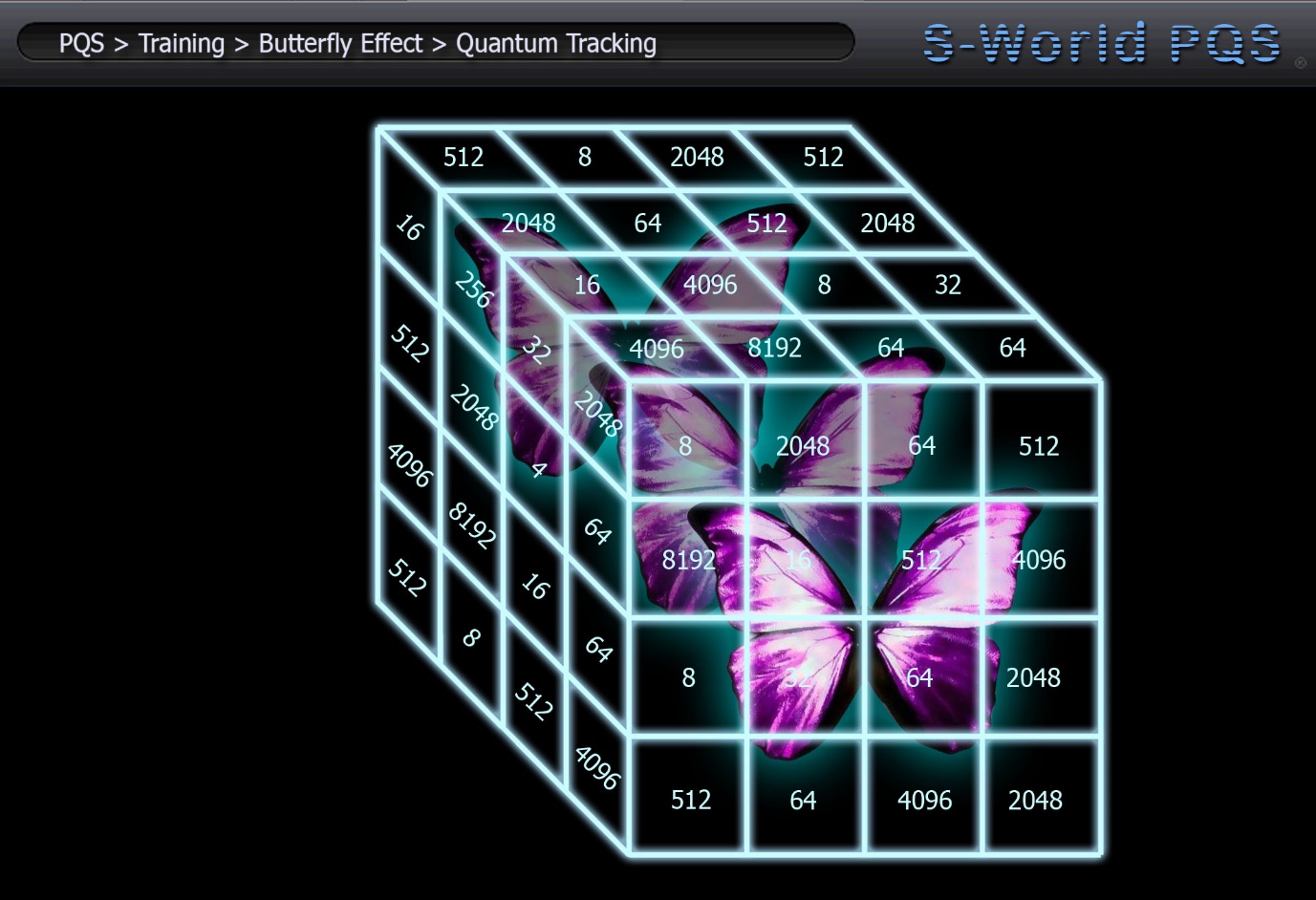
It was this consideration that lead to both Einstein’s theory of General Relativity (Gravity) and Quantum Mechanics (Powers all that’s digital. As when we looked we found that often General Relativity was illustrated in a cubes framework. And the only way to actually count the energy fluctuations appeared to be Quantum Mechanics.
When we looked closer at Chaos Theory and the Butterfly Effect we came upon the Mandelbrot Set Fractal.
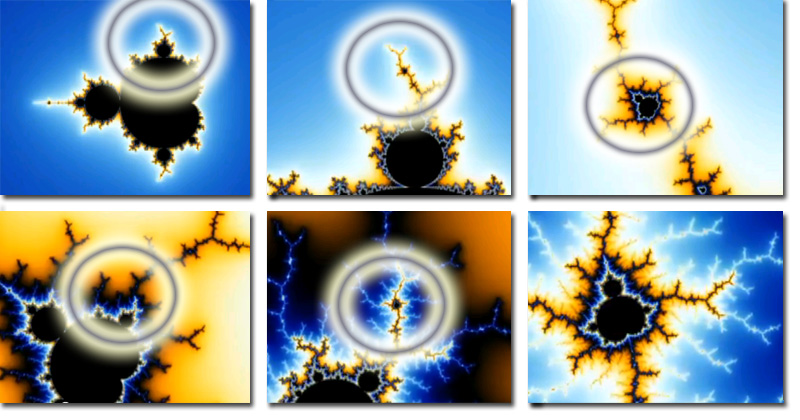
For more on the Mandelbrot Set Fractal see: http://www.s-world.biz/TST/EEE-14Billion_Years.htm
Next Chapter…
A⇔Bst
Network effects of A&B, and chosen partners
S-World ‘Lx.’ M⇔Bst Lisa Marie Schneider
S-World Virtual Network
Garrett Lisi and Quantum Economics Time Travel
QuESC
Angel Pop











Leave a Reply
Want to join the discussion?Feel free to contribute!